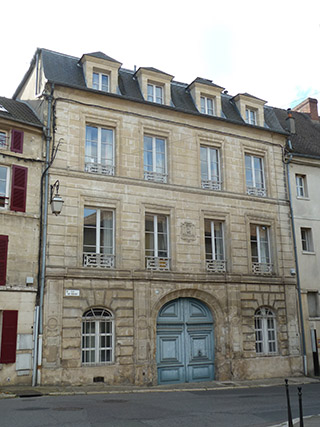Prochain point : lat="49.1571" lon="1.78364"

Former Ursuline Convent
Old Town Hall
Religious and secular functions over the centuries
From the convent...
The Ursuline convent was located here in the seventeenth century. In 1639 the lieutenant general of the bailiwick convened the notables and officers to designate the congregation that would be hosted in the new convent. The Ursulines settled in a vast estate that included a house, outbuildings, courtyard and garden, barn and an enclosed plot of fruit trees. Modifications were made in 1644 with the construction of new buildings and raised walls, as the nuns wanted to avoid being seen from the ramparts. The convent was sold as a national property in 1791 and the buildings converted into housing until 1840.
... to the town hall
In 1838 the town hall was housed in the cramped old auditorium in Rue de l’Hôtel de Ville. The municipality acquired a vast two-storey house with a courtyard, garden and other buildings that formed part of the former Ursuline convent. In addition to the town hall, the goal was to house the justice of peace in the property, together with a school for boys and a guardhouse. The work was entrusted in 1840 to the Parisian architect Charles Duval, who built an imposing town mansion of rusticated cut stone with three storeys topped by an attic. The large arched doorway with its wooden moulded door is the only vestige of the old convent. In the middle of the first floor, you can see the town arms, which are not entirely accurate since the anchored crosses of the Villeroys (seigneurs from 1525 to 1733) were replaced by navy anchors.






